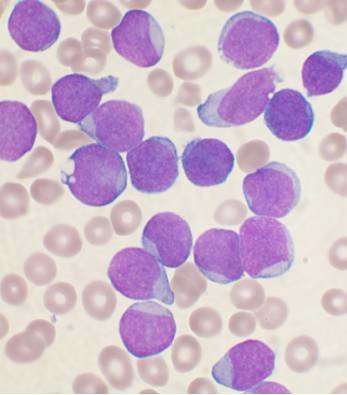New drug combo found effective against high-risk leukaemia

Australian scientists have found what could prove to be a new and effective way to treat a particularly aggressive blood cancer in children.
Acute lymphoblastic leukemia, or ALL, is the most common cancer diagnosed in children. Despite dramatic improvements in the survival of children with ALL over past several decades, children who develop 'high risk' ALL—subtypes that grow aggressively and are often resistant to standard treatments—often relapse, and many of these children die from their disease.
One common type of high-risk ALL for which new therapies are urgently needed is 'Philadelphia chromosome-like ALL' (Ph-like ALL), named for its similarity to another type, Ph-positive ALL. Shared genetic characteristics of these two types of high-risk ALL have led scientists to hypothesize that they may respond to similar treatments; specifically, a newer class of drugs known as kinase inhibitors.
However, experiments have shown that cases of Ph-like ALL that contain a genetic mutation known as CRLF2r—about half of all cases of this subtype—respond poorly to kinase inhibitors when used as a single agent. Scientists have since been investigating whether kinase inhibitors are more effective when used in combination with other agents.
In new research published this week in the international journal Leukemia, scientists at Children's Cancer Institute tested more than 5000 drugs in combination with the kinase inhibitor, ruxolitinib, finding that ruxolitinib worked synergistically with several types of commonly used anticancer drugs, the most effective being glucocorticoids, topoisomerase I and II inhibitors, microtubule targeting agents, and antimetabolites.
"New therapies are urgently needed for high-risk ALL," said lead researcher Professor Richard Lock, Head of the Blood Cancers Theme at Children's Cancer Institute. "We are very encouraged by our results, which suggest we could be on the way to developing a more effective way to treat this cancer in some children."
Based on their in vitro findings, the researchers then carried out in vivo testing in living models of disease known as 'patient-derived xenograft models' (PDXs) or 'avatars': mice specially bred to grow leukemia cells taken from individual patients with CRLF2r Ph-like ALL. Results showed that the addition of ruxolitinib to a common treatment regimen called VXL (consisting of vincristine, 2dexamethasone, and L-asparaginase) enhanced treatment efficacy in two out of three avatars, achieving long-term suppression of leukemia growth in one of these.
"The enhanced effect of treatment when ruxolitinib was added, and the variety of drug classes found to synergize with ruxolitinib in our laboratory, suggest promising potential for kinase inhibitors in the treatment of Ph-like ALL," said Professor Lock. "We hope this leads to improved treatment options for children with this leukemia in the near future."
More information: Julia W. Bӧhm et al, Combination efficacy of ruxolitinib with standard-of-care drugs in CRLF2-rearranged Ph-like acute lymphoblastic leukemia, Leukemia (2021). DOI: 10.1038/s41375-021-01248-8


















